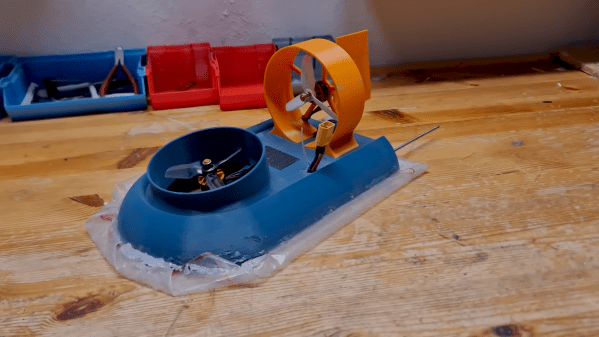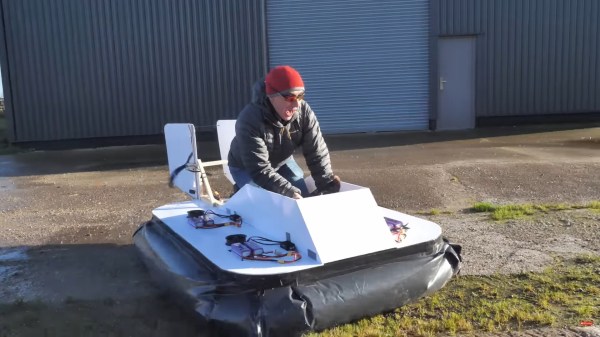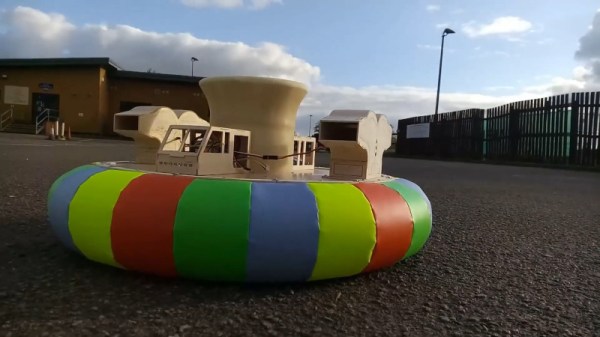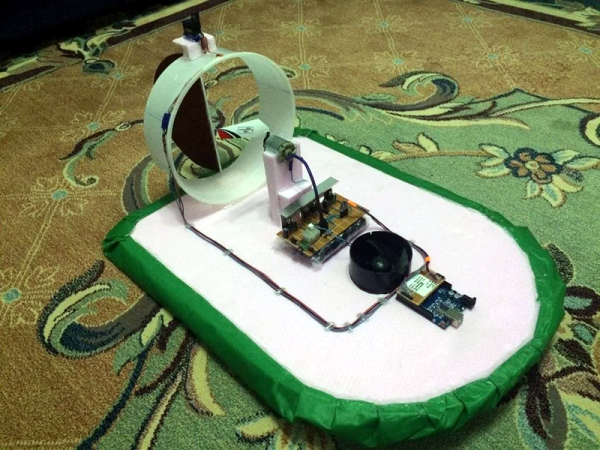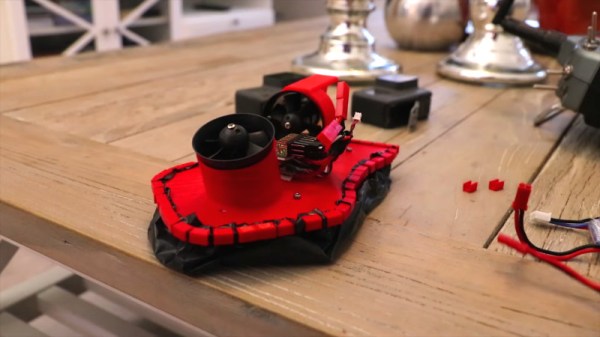The wheels on roller suitcases are one of their primary failure points. After the destruction of the wheel mount on her DIY suitcase, [Laura Kampf] wondered if it would be better to dispense with wheels altogether.
To give her suitcase a lift, [Kampf] decided to turn it into a hovercraft so it couldn’t be stopped by pavement or puddles. The first task was finding an appropriate fan, and a compact leaf blower donated it’s body to makerdom for the project. After reducing the blower to it’s constituent components and finding a secret turbo switch, work began on the momentum curtain.
“Nose-holing” the arrangement and size of the holes to pipe air through the stapled tarp and tape skirt seemed to be the bulk of the trial-and-error in this one. Based on other hovercraft designs [Kampf] found, keeping the holes near the center of the inflated portion gave better lift. In the end, the carry-on is able to lift a decent amount even on its lowest setting, resulting in a suitcase that is “not embarrassing” for travel. No word yet on what TSA thinks.
If you’re looking for another unexpected lift off, how about a full-sized flying Delorean replica? We’ve also covered some of the reasons why we don’t see more of these all terrain wonders.
Continue reading “Hovercraft Suitcase Gives Your Luggage A Smooth Ride”



